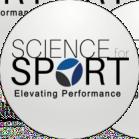P E R F O R M A N C E


Study Details



Study Details
Prac�cal Takeaways from study
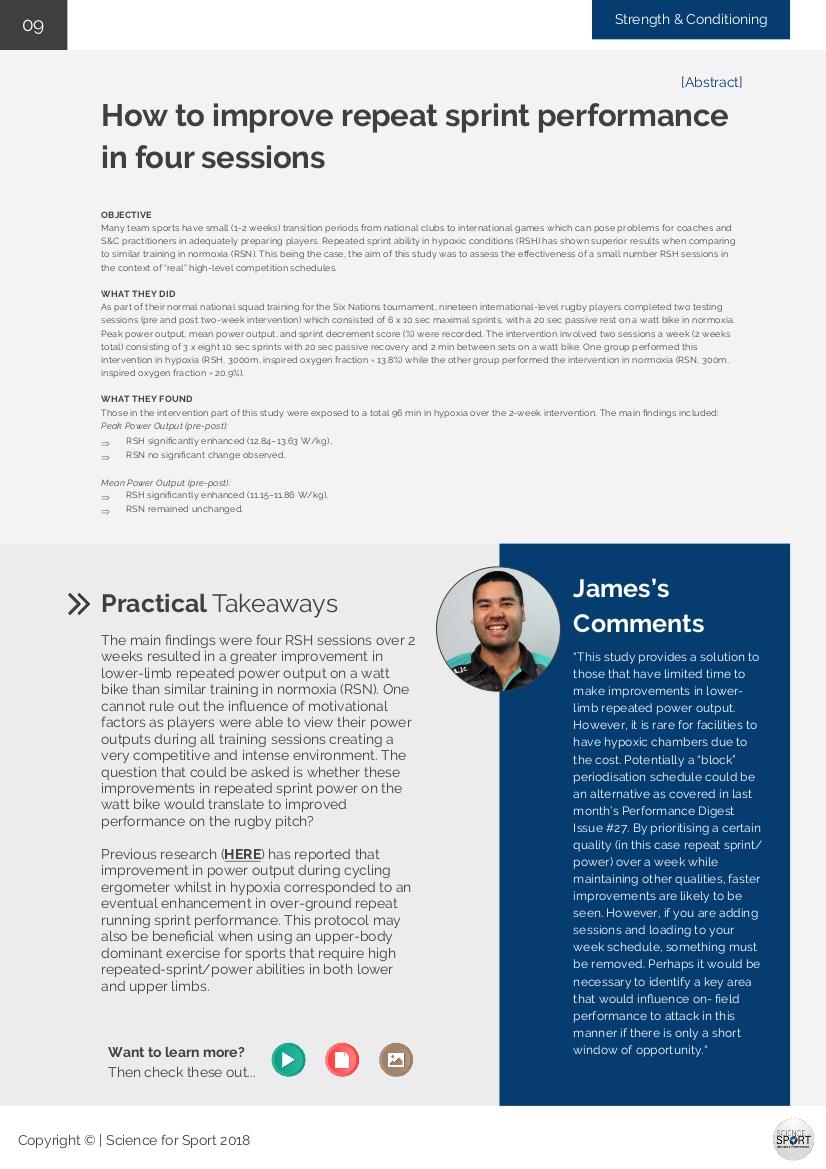
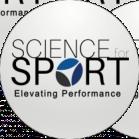
Related links to learn more about the topic
Reviewers comments on the st udy
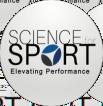
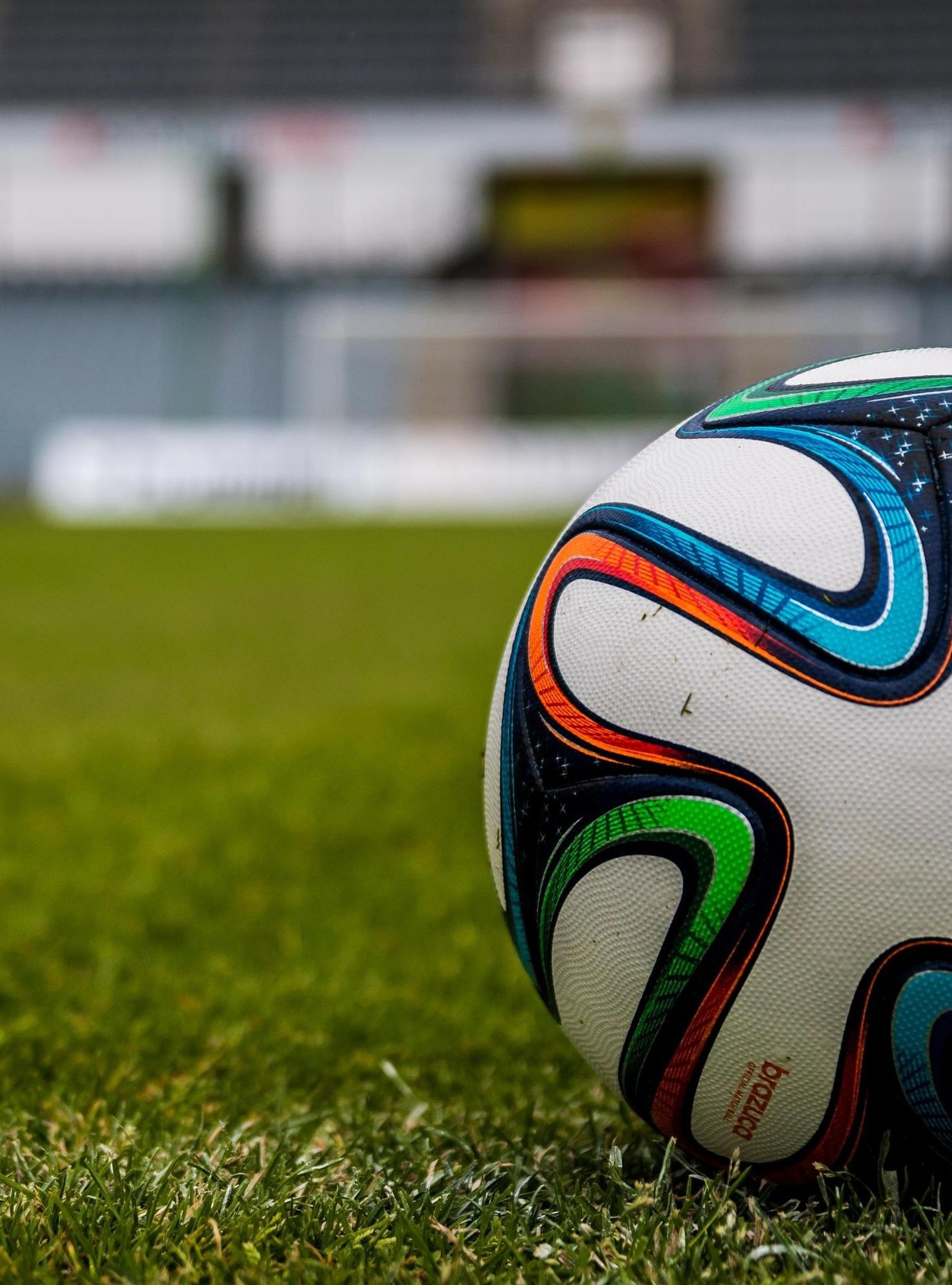


James is currently the Head Strength & Conditioning Coach for the Romanian Rugby Union. He has previously worked in America's professional rugby competition Major League Rugby with Austin Elite and the NZ Women’s National Rugby League Team. He is a published author and has completed a MSc in Sport & Exercise Science from AUT, Auckland, NZ.

Cody is a strength and conditioning coach and adjunct lecturer at the University of Iowa. He has an MSE in Exercise Science from the University of Kansas and also holds a CSCS from the NSCA.
Tom is the Head of Athletic Development at St Peters RC High School. He holds a Masters in S&C and has previously worked with West Bromwich Albion FC, Gloucester Rugby club, and Great Britain Equine. Tom is our youth research reviewer at Science for Sport.

Matthew is a Physical Therapist and the Clinical Director at a private Physical Therapy clinic in NYC. He has a special interest in the treatment of lower extremity/foot and ankle injuries along with helping runners and walkers to get back to what they love to do.


James is a Performance Nutritionist for the English Football Association and works alongside the England national teams (men's and women's). He is also a SENr registered performance nutritionist and holds a PhD from Liverpool John Moores University.



Athletes may suffer from both physical and mental fatigue at different stages of competition and sport and mental fatigue can accumulate over prolonged periods of demanding cognitive activity, which occur during and before their seasons.
There have been many studies looking at the effects of physical fatigue related to readiness to perform, yet there is a lack of research with the effect of mental fatigue both from a subjective and objective perspective. Therefore, this study aimed to look at potential changes in mental and physical fatigue over an intensive preseason training phase. It also compared how these changes affected the players’ readiness to perform.
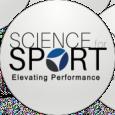
The study followed 10 elite female netballers through a 16-week preseason. Their weekly schedules consisted of four full team on-court sessions, three resistance training sessions, an analysis and tactical session and up to three on-court specialist skills sessions.
The players were asked weekly to rate their subjective levels of mental and physical fatigue along with their readiness to perform on a scale of 0-100. Along with this, salivary testing was performed to test for objective markers of fatigue. These included salivary cortisol levels and alpha amylase concentrations, which are physiological indicators of psychosocial stress within our Sympathetic Nervous System, according to the researchers.



Athletes experience varied levels of fatigue during preseason training, both physically and mentally. From a mental fatigue perspective, the higher the fatigue levels, the lower the level of readiness to perform athletes feel. This can worsen during periods of environmental instability, e.g. while travelling and while preparing for a specific opponent.
From this study, we see both physical and mental fatigue worsen the later in the preseason it is. Coaches can understand their players’ fatigue by monitoring it more closely throughout training. This can be done on a weekly basis like this study, or more frequently on a subjective level to intentionally manage it effectively This can be done through routine questioning of players at a set frequency throughout the pre- and regular season. Coaches can then target their efforts toward players whose scores indicate they are struggling with mental fatigue. With consistent monitoring, coaches can lean on learning from their players who subjectively note lower levels of fatigue in order to assist those players who are suffering.

At this time, objective measures of mental fatigue like salivary cortisol levels and alpha amylase concentrations have not been found to be significant. Possible objective markers for future research include reaction time testing and response accuracy to sport specific cognitive tasks.
Then check the se out...
There were higher ratings of perceived mental fatigue found at later weeks in the preseason compared with baseline and early preseason training. Readiness to perform was not correlated with physical fatigue but had an inverse relationship to mental fatigue levels.
When comparing weeks of the preseason, higher levels of mental fatigue were found during times of travel and opposition analysis before preseason tournaments. There was a shared variance between physical and mental fatigue, although it is a low percentage at 14.3%. This shows the rationale for treating them as a separate yet interactive factor
“This study looks at the effects of preseason training on mental and physical fatigue and its relationship with an athlete's readiness to perform. We see that both areas of fatigue increase at the later stages of preseason training.
“In order to prevent mental and physical fatigue from affecting players’ readiness to perform, coaches should routinely monitor their players on a weekly basis. Coaches should put just as much emphasis on managing mental fatigue effectively as they do on managing the physical side of things.”

In recent years, there has been much-needed attention and attempts to understand the menstrual cycle and its interaction with performance for female athletes (see ). Most HERE importantly, a topic that was once avoided is now appreciated by coaches, and female athletes hopefully feel they too can speak up regarding symptoms (e.g. cramping, headaches, nausea) or simply changes in mood that no doubt impact their performance.
Secondly, the menstrual cycle is not something to be generalised across females. Everyone responds differently, as their body is going through drastic changes in hormones across the month. Oftentimes, these changes happen overnight, creating daily fluctuations in preparedness and adaptability
Further, although much of the research supports a personalised approach (see ), there are still some who HERE aim to over-simplify the menstrual cycle into two or three distinct phases and that seems far from appropriate as we continue to learn more through research and application.
Ultimately, the goal of this review paper was to help coaches appreciate the impact the menstrual cycle can have on females’ daily psychophysiological readiness, paying special attention to the individual nature and fluctuations across the entire process, and how it interacts with athlete preparation and performance.


The authors outlined and addressed the topic of understanding the menstrual cycle by first highlighting the gaps in an overly basic, ‘two phase’ model (follicular and luteal phases) or even the commonly researched ‘three phase model (menstruation, pre-ovulation, and luteal) - both ignore hormonal shifts between phases, leaving practical application for athletes incomplete.
The authors encouraged a more complex focus – recognising menstruation, the early and late follicular phase, ovulation, as well as the early and late luteal phases – that appreciates the transitions and fluctuations in hormone levels and the psychophysiological impact it has on a female athlete on a daily basis. That said, symptoms associated with these hormone fluctuations vary between individuals and even between cycles in the same individual. Regardless, at some point, interference with psychophysiological readiness is very likely, and identifying ways to navigate them are important. Therefore, learning and discussion need to be constant between coach and athlete regarding a female’s menstrual cycle and symptoms. This hinges on the appropriate concern (e.g. language, empathy, and respect), as well as actions, identifying sustainable interventions or modifications. Not to mention, research into various means and methods that allow females to continue to train or compete at a maximal level throughout the month without sacrificing long-term health.



Menstrual cycle symptoms are individual (e.g. in the overall amount, intensity, and duration) and can vary based on a combination of factors (e.g. sleep, nutrition, other stressors, etc.). Coaches should inquire about all of these areas related to recovery and readiness (e.g. sleep quality, fatigue, soreness, mood) on a daily basis with a wellness questionnaire prior to training in order to make sure loads are dosed appropriately
Coaches, especially males, should first educate themselves about the menstrual cycle. Likewise, female coaches should learn about the individualised response versus only their anecdotal experiences. From there, coaches can either lead education or bring in another professional to help normalise conversations and build a knowledgeable, open, and comfortable conversation around the topic.
The days during pre-menstruation appear to have the most symptoms that would interfere with athlete readiness. It may be most productive during this time period to forego high-intensity activity and prescribe additional recovery or low-intensive activity (see HERE). Coaches should be understanding, flexible, and willing to give up a day for more productive training when readiness is more optimal.
Progesterone increases post-ovulation, negatively impacting nerve activity, metabolism (making and burning energy from food), regulating body temperature, and protein synthesis (see HERE).
Managing training volume and intensity during the rise and fall of progesterone can help limit excess fatigue and poor performance.
Encouraging athletes to monitor (e.g. cycle tracking, symptom logging) either by simply journaling (paperbased) or mobile applications (e.g. FitrWoman) can help them better understand symptoms to be prepared throughout the menstrual cycle and promote open conversations between coach and athlete about the
menstrual cycle. Coaches can write out training prescription with exercise options, volume ranges (e.g. two to five sets), and intensity windows (e.g. one to three repetitions in reserve, a velocity window, or 70-80%-1RM) to allow females flexibility in optimising training based on mood, energy, as well as known hormone levels or physiological function they are knowingly experiencing through tracking. This provides the athlete with autonomy and supports a trusting coach-athlete relationship.
If resources allow for measurement of hormone levels (see ), this can help provide objective physiological HERE feedback to best identify where in the cycle the athlete is at that time. However, the subjective report of symptoms is likely the greatest driver to adapt to with regards to training prescription.
Most importantly, competition dates are not negotiable like training days/activities and the negative symptoms associated with premenstrual syndrome can be reduced without the use of drugs (e.g. analgesics, antiinflammatories, hormonal contraception). Instead, symptoms can be managed in a more natural way, through changes in nutrition (e.g. curcumin or omega-3 supplementation), low intensity aerobic exercise (e.g. walking at 60-70% of heart rate reserve), yoga, or even simply sleep extension to reduce inflammation associated with changes in hormone levels. These approaches are much less invasive and potentially deleterious, providing a sustainable, long-term approach for female athletes seeking consistency in their ability to compete and perform.
The best way to find what works best for the individual is to monitor symptoms and be strategic with one intervention at a time to find what works best. More often than not, the approach that is most effective is the one the athlete believes in and is willing to commit to on a monthly basis.
Practitioners should not oversimplify the menstrual cycle into 2-3 phases, but rather appreciate the hormonal fluctuations that occur throughout and the impact those changes can have on training and performance. For the exercising population, 80% of regularly menstruating (eumenorrheic) females report symptoms that negatively impact performance every menstrual cycle (see ), and as much as 67% in elite athletes HERE (see HERE).
Extensive research is needed for females attempting to manage and perform consistently throughout their menstrual cycle, as well as individual monitoring and proactive interventions to optimise an individual’s performance when negative symptoms of premenstrual syndrome are masking performance potential.
“The research and practice around menstrual cycle education, research, and openness is changing for the better for female athletes. Most importantly, it should not be dismissed, and cannot be generalised. It is not a binary cycle of menstruating (having a period) and not. For coaches and athletes alike to be most successful in optimising training, they need to make an effort to learn, understand, and adapt to the psychophysiological state of the athlete.
“The menstrual cycle is a very real, constant, and ever-changing physiological state that is difficult for a male to understand. Therefore, the best thing that any coach can do (male or female) is to create a safe space for the athlete to be honest and open (transparent) about their mental and physical state. The menstrual cycle is not everything, but it is a component that at times, regardless of sleep, nutrition, or recovery, is going to interfere with performance.
“A coach should aim to build a trusting relationship with every athlete, be educated so you can shed light on what is happening inside their body, but most importantly, be ready and willing to simply listen. If you do that, performance and productivity are limitless.”
This month ’ s top research in strength & conditioning.
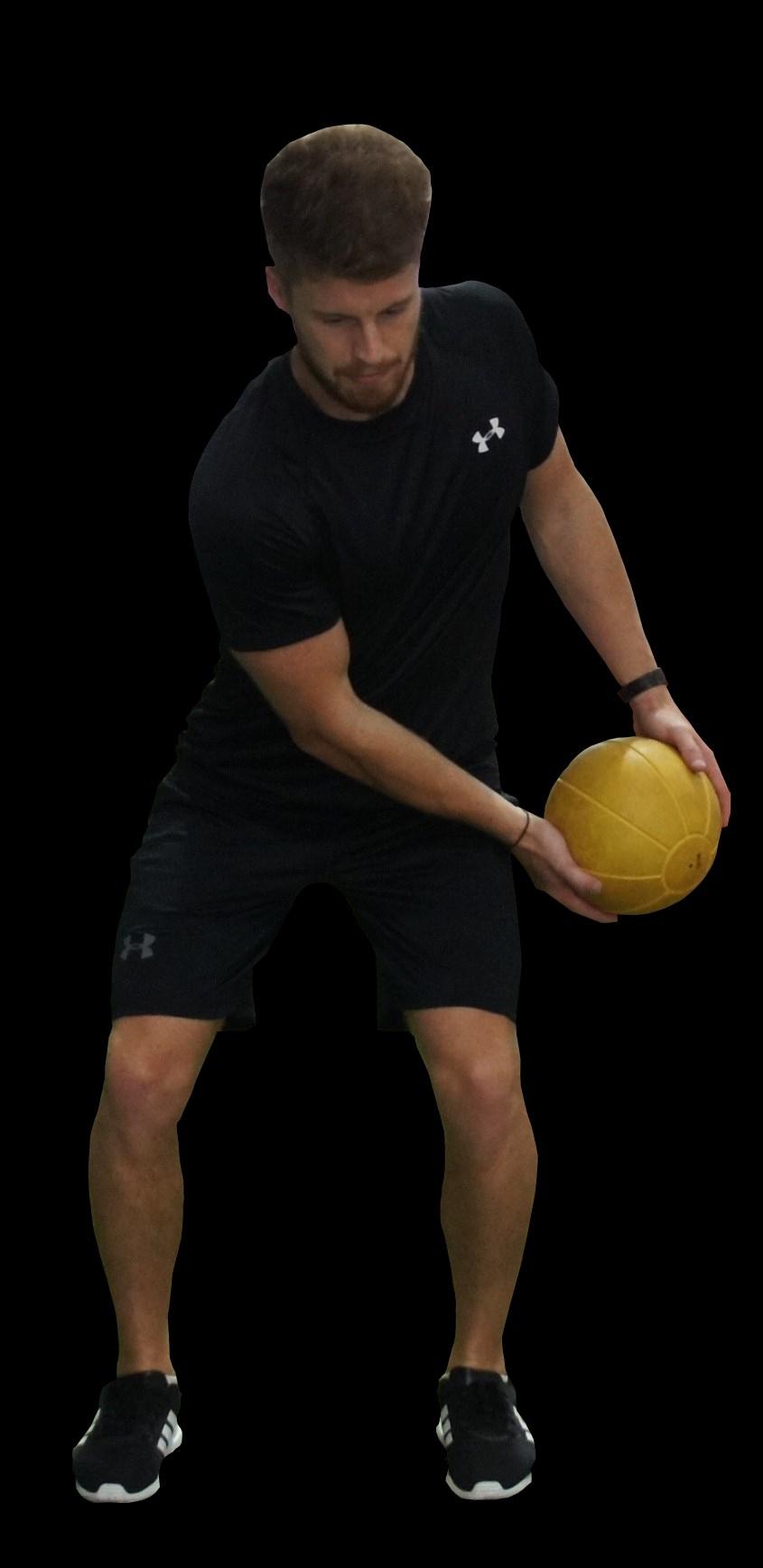






Concurrent training is combining aerobic and strength training, typically within the same session, day, or week.
As adaptations to each training stimulus oppose one another, it’s often called the interference effect. Previous meta-analysis showed explosive strength development may be attenuated by concurrent training but muscle mass and maximal strength development remain uncompromised (see However, HERE). there were many inconsistencies within the studies pertaining to muscle hypertrophy mainly due to unreliable measurements of muscle size. Specifically, measuring at the muscle fibre level.
Research has shown the potential for the whole muscle to hypertrophy while muscle fibre size was attenuated with concurrent training (see Therefore, this systematic HERE). review and meta-analysis drilled down the extent to which concurrent aerobic and strength training influence Type I and II muscle fibre size adaptations compared to strength training alone.
The literature search followed these criteria:
Healthy adults of any sex or age.
Intervention consisted of at least four weeks of supervised combined aerobic and strength training.
A comparison group of identical strength training prescription with no aerobic training.
Outcomes were defined as hypertrophy of Type I and II muscle fibres.
The following data was extracted for analysis:
Subject characteristics (sample size, age, training status).
Intervention data (duration, type)
Outcomes (Type I and II muscle hypertrophy).
The final analysis included 15 studies with 300 subjects, with 153 performing concurrent training and 147 performing strength training only. Standard mean differences (SMD) were calculated by taking the mean difference between groups divided by pretest standard deviation. Effect sizes were calculated for pretest post-test control group study designs. Further sub-group analysis was performed for:
1. Aerobic training (e.g., cycling vs. running)
2. Concurrent training frequency (low = 4.5 ± 0.8 vs. high = 6.3 ± 0.8 weekly sessions), equating to 2.2 ± 0.3 vs. 3.2 ± 0.4 weekly sessions for strength training only group.
3. Training status (untrained vs. active).
4. Training modality (concurrent training on different days, same day, or same session). For same-session concurrent training, training order was also analysed. Finally, studies were analysed for a quality score using the PEDro scale with >6 being high-quality, 4-5 being medium quality, and <4 being low quality
Gone are the days where doing cardio with strength training will kill your gains. Professional and amateur athletes have been training both qualities for their sport for decades, making developments in both. Here’s how to navigate this space within different populations:
Professional/amateur athletes
As you will be performing aerobic and strength training in the same day, you can either:
1. Perform aerobic conditioning and skills in the morning and strength training in the afternoon. This places the most important part of training (skills) first in the day when fresh before hard strength training. If strength training is easy upper body exercise, this can be reversed.
2. If you need to perform aerobic and strength within the same session, it is better to strength train prior to aerobic training (see HERE).
3. Alternate qualities on separate days.
‘Weekend warrior’
If your goal is to maximise muscular development, then you should try to separate aerobic and strength training on different days. If you must perform aerobic and strength training together, avoid running after strength training and use off-feet cardio equipment instead like cycling or rowing. This may be due to the repetitive eccentric load when running
SMDs ranged from -1.71 to 1.13 for overall muscle hypertrophy indicating a slight attenuation in whole muscle hypertrophy Type I muscle fibre hypertrophy SMD ranged from -1.71 to 1.03 and Type II muscle fibre hypertrophy SMD ranged from -1.49 to 1.13.
Interestingly, the only sub-group analysis to show a significant interference effect was when running for aerobic training, not cycling, on Type I muscle fibre size. Overall, concurrent training may attenuate whole muscle hypertrophy but is more pronounced at the muscle fibre level when aerobic training is performed running, at least in Type I muscle fibre.

“Training concurrently is unavoidable within professional and amateur sporting populations; most sports require development of multiple qualities at once. The best-case scenario would be to only focus on one quality to maximise it but this is not feasible or practical in the real world.
“In this instance it's about trying to minimise the negative effects of one session to the other. In my experience strength training is ideally performed before aerobic work, however performing conditioning before strength training takes its toll. For the weekend warrior, it will depend on the time they have to train. If you are short on time, then combining aerobic and strength training into one session is a good idea. If your goal is to step on stage as a bodybuilder, then you might want to separate these sessions as much as possible.”




Overtraining syndrome is a known condition in the sport science community which commonly affects performance, fatigue and mood disturbances, which lead to underperformance. It can persist for weeks or months.
Proposed symptoms of overtraining also include increased risk of injury, reduction in maximal performance and decreased sensitivity to serotonin receptors.
It is commonly compared to overreaching, which is a similar syndrome but does not have the lasting performance decrements.
Although overtraining has been seen in the athletic population, it has not been objectively defined via physiological and psychological changes that are actually occurring. This systematic review attempted to better understand changes occurring within the athlete when overtraining syndrome is occurring.
The authors performed a systematic review on overtraining to determine objective evidence occurring in the syndrome. Criteria included providing the following: detailed changes in performance prior to onset of overtraining, performance suppressed for more than four weeks and psychological symptoms of maladaptive adaptation. These were utilised as they are commonly used to define overtraining syndrome and differentiate it from overreaching.


This study shows the difficulties in truly defining the changes that occur in overtraining from a psychological and physiological level. This was partly due to the inability to show evidence of changes in physical capacity at a healthy state compared to an overtrained state. Because of this, research on OTS may be more beneficial via case studies/observational studies due to the difficulty and unethical nature of inducing overtraining on an athlete.
Due to the vague definition of overtraining along with all the factors in properly studying the condition, practitioners and researchers need to adopt a way to verify if and when overtraining is actually occurring.
In order to properly test overtraining in an athletic population, it should be performed when the athlete is healthy, when overtraining is suspected and at least four weeks after the suspected overtraining. The use of validated questionnaires at the time of suspected overtraining and four weeks later can give further data to support the diagnosis of overtraining.
Following a systematic review, the authors found zero studies to meet all inclusion criteria to properly define the objective physiological and psychological changes in overtraining syndrome. The authors concluded that this was most likely due to no studies providing combined changes from a healthy state to a suppressed state of performance lasting more than four weeks. Although some studies did find a decrease in performance when looking at overtraining, it failed to give the length of that decline. Along with this, studies that showed psychological changes did not corroborate it with objective evidence like a validated scale.
“Overtraining is common in athletics, and has become a major issue due to the risk of performance decrements and potential injury risk.
“Although it is seen throughout the research, it lacks an objective definition which considers physiological and psychological changes occurring. Coaches should be consistently monitoring for decreases in performance and pay attention when these changes last more than a month. They should always be on the lookout for increases in fatigue and injury along with mood changes in their athletes.
“Once overtraining is suspected, the athletes need to be tested properly and changes in training programs must occur.”


Adolescent females encounter body changes which include growth spurts of increased height and mass, which disrupt motor control and patterns. With this, there is a higher risk of injury in this age group when participating in athletic activity
Strength may have an effect on this population, as deficits in it have shown a risk of joint instability, which is furthered through growth spurts and hormonal changes. In this study, the authors compared how the strength of adolescent females affected their athletic performance and movement skill.
The authors measured the anthropometrics of a group of 104 girls (average age of 14) who participated in a variety of sports during their Physical Education classes.
The girls performed the following activities across two classes: isometric midthigh pull, drop vertical jump, 10 and 20m sprints, back squat assessment and double/single leg countermovement jumps. From the measurements of the isometric midthigh pull which determined relative strength, the girls were split into three groups: strong, average and weak.
The purpose of this study was to examine whether or not there was a correlation between relative strength to sprint performance, jump height and movement ability From this, the authors aimed to determine whether or not higher strength was correlated with better athletic performance and movement skill capabilities.



The study found that stronger girls (higher scores with isometric midthigh pull) performed better across the board with the measured tasks. From this, we can see the positive benefits that strength can have on athletic performance in this population - stronger girls are able to move more proficiently, which is correlated with reduced risk of injury With this population going through growth and hormonal changes, strength changes can have a positive impact on their ability to progress their performance.
It is important that coaches understand this population and what is going on on a biological level with them. With the changes they are encountering, increasing relative strength can have positive effects that can assist with reduction of injury risk. A comprehensive lower extremity strength program performed throughout PE classes and sport in this population is one way coaches can properly manage this population.
This study is in agreement with previous studies, which included a positive correlation between relative strength and sprint performance.
The authors found a positive correlation between the strength of the females and their performance in the tasks performed. Females who had a higher score of the isometric midthigh pull were able to jump higher, score better on the back squat assessment and sprint faster With this, the girls that were measured to be strongest were significantly faster than those girls that were weakest.
“Given the changes females of this age group go through, there is a higher risk of movement compensations, joint instability and risk of injury
“Strength training can help to not only reduce injury risk, but can have positive effects on movement patterns, sprint speed and jump height. With this, athletic performance can improve along with acquisition of proper movement skill.
“Coaches and rehabilitation professionals should make a strong effort to promote strength training into programs for this population. This can be done through Physical Education classes along with all team sports.”


Neck strength plays a vital role in contact, combat, and collision sports. Previous research has suggested that higher neck strength reduces the risk of concussion (see HERE) The suggested mechanism behind this is the reduction of head acceleration from a strong, stiff neck. However, there is no consensus in the literature about neck size relating to neck strength and concussion. Further, grip strength represents overall strength and the relationship between grip and neck strength are highly variable. Finally, anthropometrics' relationship with neck strength has not been investigated.
Therefore, the aim of this study was to measure maximal isometric neck strength of male and female soccer and rugby players, and the relationship between neck strength and sport played, sex, age, anthropometry, and concussion history
231 soccer and 127 rugby athletes (age = 14.56 ± 2.9 yr) were taken through a range of tests and memory recalls; 30% were female and 70% were male, with age groups split into 11-12, 13, 14, 15-16, 17+ years.

Firstly, subjects were screened during the pre-season of their sport by a physiotherapist with questions about current neck pain/symptoms, previous concussions and head and neck injury A physical assessment included cervical range of motion and tenderness.
A face-to-face survey was taken with the research team regarding age, sport, position, number of years in the sport, current neck strengthening exercises, hours spent training per week, number of soccer headers per week, history of diagnosed concussions, and potential concussive events.
Anthropometry assessment included weight, height, neck girth, grip strength, and neck strength. Grip strength was measured on a hand-held dynamometer. Neck strength was measured with a head harness and load cell, where incremental load was manually applied until the head moved from a neutral position. This was performed for the neck flexors, extensors, and lateral flexors. Each measurement was correlated with sex, age, and sport played.
Male rugby players showed increases of neck strength with age greater than male footballers. Female rugby athletes who were 17 or older were significantly stronger than similarly aged footballers but no difference was seen when adjusting for weight.

Females had significantly weaker necks than males except for the younger age groups of 11-13. When sports data were combined, neck strength increased with age except for neck flexor/extensor ratio, which decreased with age.
Athletes with stronger necks in all directions were associated with being taller, heavier, stronger grip, and with larger neck girth compared to those with weaker necks. Neck extensor strength had the greatest correlation with grip strength and neck girth. Neck flexor strength was moderately correlated with grip strength and neck girth.
Subjects with stronger necks were correlated with more hours of training per week and played more years of their sport compared to those with weaker necks. When broken down by sport, the same results were found. However, only the 17+ aged female soccer players demonstrated these same correlations within female soccer players.
Male rugby athletes with lower neck flexor/extensor strength ratio had the highest rate of self-reported concussions.
There’s a lot to unpack and take away from these findings:
The neck flexors should be prioritised in training to maintain a strong flexor/extensor ratio.
Female athletes may prioritise neck training from a young age.
Assessing neck strength through flexion and extension may provide a more informed diagnosis for neck programming.
But jumping into intense neck training is like starting with depth jumps for a beginner There s a big injury risk and there isn’t any point dulling future intense exercise. So, here s a progression you can use to build work capacity and strength in the neck.
Phase 1: Sub-maximal volume

Exercise examples: 4-way band isometrics. Iron Neck 360° spins. Lying on a bench with your head hanging off maintaining a neutral head position. Neck flexion, extension, lateral flexion.
Hold isometrics for 10-30 seconds. 10-20 reps for flexion and extension.
Phase 2: Maximal isometrics
Exercise examples: Overcoming partner isometric. Hold isometric for 6-10 seconds.

Phase 3: Reactive isometrics
Exercise examples: Partner reactive isometric. Reactive isometric sets can be 6-20 seconds long. Going through this progression will help prepare an athlete's neck for each stage without pushing too far to potential injury
“We definitely need more research in this area. A comparative observational study based on self-reported data isn’t the strongest of evidence. Further, a newer group of researchers are disputing claims about neck strength reducing the risk of concussion (see video link below). Keep an eye on this space as there will be two sides battling this out in the future.
“However, regardless if neck training reduces the risk of concussion, there are other important reasons to prepare the neck for sport. Reducing neck strains and having the strength to finish tackles, takedowns, submissions, and control positions are vital for collision and combat sports.”
This month ’ s top research on technology and monitoring.

P O S IT IO N S P E C IF IC T IM E - M OT IO N A N A LY
A N D C O L L IS IO N D E M A N D S O F A M AT E U R
U N IO N P L AYE RS
BA L A N C IN G E XT E RN A L A N D IN T E RN A L T RA IN IN G LOA D DATA
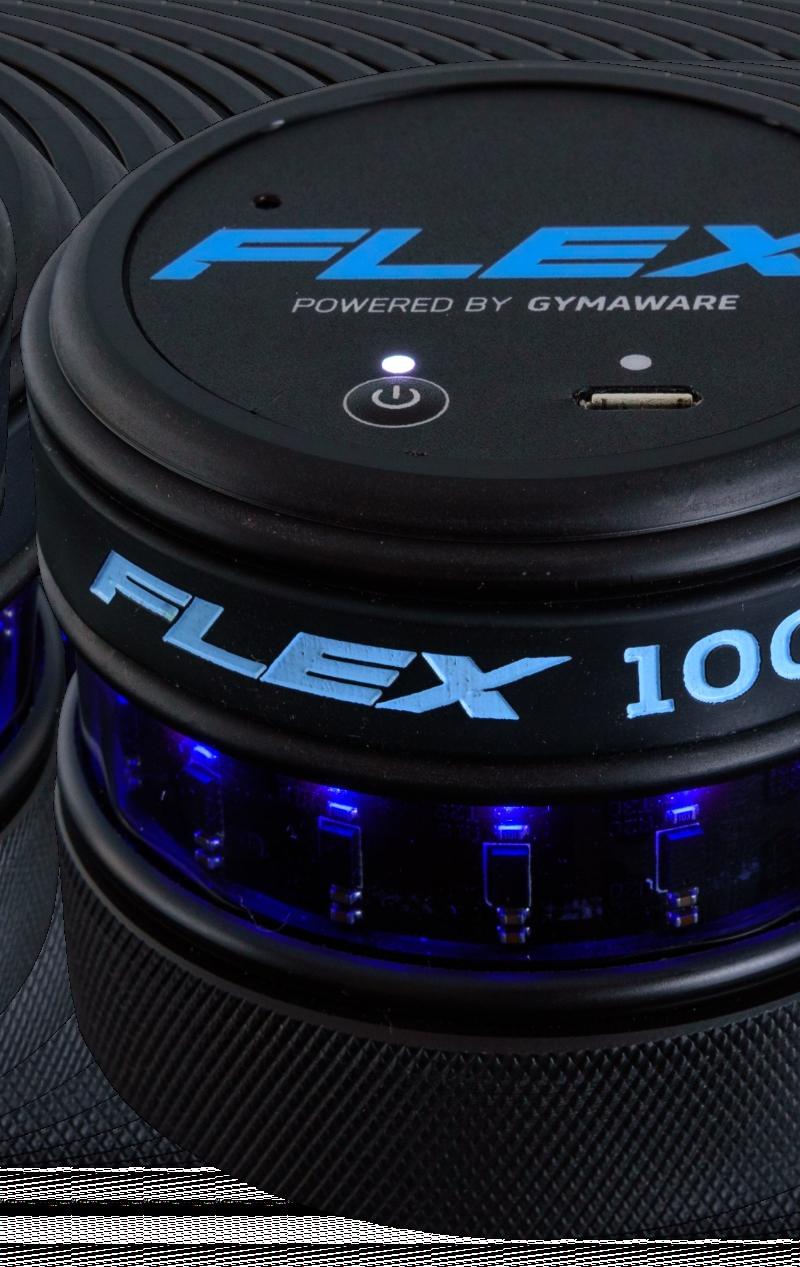
C A N T H E C O U N T E RM O V E M E N T
J U M P BE U S E D TO M O N ITO R S P RIN T P E RF O RM A N C E ?
Global Positioning System (GPS) devices worn by athletes today provide valuable and individualised feedback based on movements during competition. This has been especially evident in understanding the demands of rugby union (see HERE), helping guide coaches towards adequate preparation (e.g. volume and intensity of work) in training.
GPS devices are equipped with more than just a sensor for measuring distances covered, as built-in 3-D accelerometers, gyroscopes, and compasses provide inertial feedback to coaches on other physical demands (e.g. mauling, scrummaging, or tackling), with the ability of measuring accelerations, decelerations, and higher force collisions.
To date, much of the research of the physiological demands and movement characteristics for rugby union has been specific to players at the elite level (see ). However, the HERE majority of rugby union players are participating at the amateur club level, where we could assume the game is played differently, given the different physical abilities of those athletes (see ). Therefore, this research used GPS data to perform HERE a time-motion analysis for an amateur rugby union team, examining individual movement variables (e.g. distances and speeds), as well as collision loads by position.
Twenty amateur club-level rugby union players (age 21.2 ± 2 yrs) wore GPS devices for 16 matches during the 2017 season. Data was only considered for players who played a minimum of 60-min in a match, leaving 86 data sets in total for analysis. Researchers examined total distance covered, maximum speed, and collision load.
Maximum speed (Vmax) was used to calculate the number of sprints (>81% Vmax, >1-sec), as well as create five individualised speed zones (<20% Vmax – standing and walking, 20-50% Vmax – jogging, 51-80% Vmax – striding, 81-95% Vmax – sprinting, and 96-100% Vmax – maximum sprinting), considering highspeed running as any running >60% Vmax. These values were examined as total absolutes, as well as a relative percentage of total match distance.
When calculating collision load, software analysis quantified 3D accelerometer data based on speed, duration, and size of impact as g-force loads (3-10-g – moderate to heavy impact (e.g. rucking), 10-15-g – very heavy impact (e.g. tackle), 15-66-g – severe impact (e.g. high speed/force collision).
The GPS data was examined by general position (forward or back), as well as specific playing position (front row, second row, back row, half back, inside back, and outside back) for comparison and understanding of demands during match play



Performing an objective time-motion analysis with a GPS device allows coaches to quantify and better understand specific loads for the players on their roster This is helpful in going beyond the generalised understanding that a sport like rugby union involves a high volume of various running speeds over the course of a match, as well as stressful and often aggressive contact and collisions between players. It is well understood that loads are high and extreme but having specific volumes can aid coaches in more accurate preparation for competitions, instead of risking overtraining or undertraining players.
§ Specifically, when considering volumes from this match-play researched, authors suggested aiming for 95th percentile of their results (averages + two standard deviations) to appreciate variation between matches and ensure adequate preparation versus underpreparation. For example, forwards should be prepared to cover about 6.7-km in roughly 90-min of play, 88% (5.8-km) of which was standing, walking, or jogging, striding (51-80% Vmax) 1.6-km and sprinting or max sprinting (>81% Vmax) upwards of 250-m in a match.
§ Likewise, a back should be prepared to cover about 7.8-km in a match with 6.8-km (88%) of that being standing, walking, or jogging, but with nearly double the volume of high-speed running (>60%Vmax), striding and sprinting more than the forwards. Therefore, backs should be performing more sprint volume in training to prepare them for the higher demands experienced in competition.
Performing a time-motion analysis is also best done for a specific team across a series (4+) of competitions, as the workloads will be specific to the roster of players involved, their playing strategies, tactics, and the context of the match (environment, opponent, substitutions, home vs. away, outcome, etc.).
If the opportunity to implement GPS is a possibility, it is likely best practice to simply collect data first, not making a ny inferences, but normalising use of devices and observing how players move. This may take a full season to gain complete understanding, but in the short-term coaches can lean on other monitoring strategies (e.g. session-rating of perceived exertion, wellness questionnaires, other performance data, and competition statistics) and cross-reference the data for inference and relationship.

Using GPS data to establish individualised speed capabilities (Vmax) is critical to understanding the intensity at which someone is operating. Relativity matters, and this can be used as a reference to monitor performance and fatigue. Coaches must be careful to not over generalise external load information, as the internal response and load is always relative to the individual.
§ Coaches can use this number to reliably assess performance during play, not having to perform specific testing outside of competition.
§ Likewise, the volume of relative high-speed efforts achieved can be used to suggest fatigue if numbers are low but subjective reports of exertion are high, further guiding coaches in the need for recovery or reduced load in subsequent training sessions.
One of the most important things that GPS allows is the effort to quantify more than just distance and speed. Coaches can use the collision load insight provided from these micro-technology devices to better understand the physically taxing efforts that are involved with collisions, scrums, and rucking. Similar to how coaches respond to distances or speeds, identifying the need for reduced load following a match, or simply understanding the physicality needed for specific positions and using that information to encourage more strength and hypertrophy training in the off-season to best prepare players for those specific positions.
§ As mentioned in this specific group, forwards, especially those in the back row, had the highest overall collision load.
§ Whereas, outside backs had the highest volume of moderate-high intensity impacts (e.g. tackles and high speed/force collisions).
Considerable difference in walking and running distances between positions. Backs covered roughly 6-km in a typical game, while forwards covered roughly 5-km, which was substantially less than professional players who ran upwards of 7+-km and 6-km respectively (see or HERE HERE).
§ However, when calculated as a rate relative to minutes played, backs covered 76.1-m ∙min-1, and forwards covered 66.1-m ∙min-1 which was in closer relation to professional levels (see HERE)
Forwards had higher collision load compared to the backs, with back row forwards (flankers and number-8) having the highest specific position collision load.
§ Although outside backs had the lowest collision load, their average impact was highest due to prevalence of high-force contacts.
Significant differences in the individualised speed-zones calculated from Vmax between players.


Of all positions, front row forwards spent most of their time in the ‘jogging’ (20-50% Vmax) zone, while backs spent a greater portion of time at ‘high-speed running’ speeds (>60%Vmax).
§ Specifically, half backs had the highest volume of highspeed running (>60% Vmax) speed and outside backs spent the most time ‘sprinting’ or ‘maximal sprinting’ (>81%, or 96-100% Vmax, respectively).
“GPS devices equipped with accelerometers have truly streamlined the time-motion analysis process and offered coaches specific and readily available feedback regarding the outputs of players. With this information, coaches can make more accurate, efficient, and effective decisions regarding training in off- and pre-season preparation, as well as training prescription and monitoring in-season.
“The accuracy and reliability for current micro-technology and wearable movement tracking devices is there (see HERE HERE) and - the technology is constantly improving, with higher frequency sampling, while GPS technology companies are progressively developing the software and algorithms to analyse data efficiently
“Offering coaches and athletes the individualised and holistic values for variables, (e.g. distances, speeds, accelerations, decelerations, and contacts), that quantify the physical demands associated with play in any sport, is important. With these numbers, coaches can reduce injury risks associated with load-mismanagement (e.g. under preparation, overtraining, or lack of recovery) and sustain, if not improve, performance potential across a season.”




Training load (TL) metrics can be categorised as either internal (ITL) – which showcase psychophysiological measures of an athlete’s response state (e.g. session rating of perceived exertion (sRPE) or heart rate (HR)) – or external (ETL), which is a measure of an athlete s output (e.g. total distance (TD) covered or high-speed running distance (HSR)).
Monitoring a combination of ITL and ETL variables can provide coaches with a better insight into the work performed and the athlete’s response. There has been research (see ) to suggest that variations in ITL and HERE
ETL are seen at different phases of the competitive season and by different positions, but no research that has specifically examined the relationship between ITL and ETL based on contextual factors.
Therefore, the aim of this study was to examine a potential influence that player position or competition phase may have on ITL or ETL across a soccer season.
Seventeen NCAA D1 female soccer players (age 21.8±1.7 yr, three forwards, nine midfielders, and five defenders) had match-TD (m) and -HSR (running >15-km∙hr-1) data collected using Global Navigation Satellite System units (OptimEye S5), as well as RPE collected 30-min following each game.
A total of 19 games were analysed and the season was divided in half, based on opponents (the initial 10 nonconference matches, followed by nine conferenceopponent matches in the second half of the season). Analysis aimed to identify relationships between player position, competition phase, ETL (TD & HSR), and ITL (sRPE) variables.
The demands (e.g. TD and HSR distance) of match-play are different based on the position and style of play for a given team (e.g. central midfielders tend to run more and some midfielders tend to cover more distance in the first half). Coaches should be aware of these values and use them to adequately prepare players through the off- and pre-seasons for the distances and intensities they will experience in a match. Doing this will help to better manage fatigue and help improve recoverability following a match. The stimulus of a match should not be novel to an athlete coming into a season.
In addition to appreciating player position, coaches should keep the workloads of nonstarters to adequate levels, in the event they would be called into a higher volume and intensity starter role. This ‘top-off’ work can happen following match-play or in subsequent training sessions. The important thing to remember with this additional work is that athletes still should be tapered and feel ready for gameday by limiting workloads in the 48-24-hr prior
Total distance is an important metric to track - this can be paired against sRPE to identify an athlete who could be experiencing fatigue. Total distance can be viewed as the ability for a player to be active and engaged on the pitch - if TD is lower than normal and sRPE is high, this would be a warning sign of an overly fatigued athlete.

It is important for coaches to remember that a lower TD may not always be related to low sRPE. Coaches should appreciate them separately as well, understanding that intensity (e.g. HSR) of that distance plays a part in RPE for an athlete. Total distance may be the initial number to monitor, but coaches should also look to the speed of those metres on the pitch. This is where values such as HSR and even Player Load can be helpful to understand athlete outputs.
It is critical for an athlete’s RPE to be honest and reliable. This happens through teaching athletes what each value (1-10) represents, as well as why the coaches are interested in this value. From there, it is important that coaches are consistent with either follow-up conversations, modifying training, and sharing information with athletes. The tactics of a coach s response to RPE data needs to be appropriate and not that of blame or shame to an athlete’s subjective report.
It is important for coaches to manage workloads across the season, not allowing a steady decline in abilities and an increase of fatigue. This is accomplished through an appreciation for the recovery process from the first week of a season (e.g. rest days, encouraging sleep, adequate nutrition) versus being overly aggressive with workloads and attempting to cut corners with recovery because players are fresher at the start of the season.

Total Distance and player position was a forecast for sRPE, with TD serving as the best prediction of sRPE (better than HSR).
The relationship found between TD and sRPE was consistent throughout the entire season.
The phase of competition did not impact sRPE for this specific team of female NCAA D1 soccer players.
“What I think is an important aspect to recognise with this study is that ETL data is helpful for coaches to collect, as it provides an unbiased measurement of a player’s output, but there is more to appreciate. Advancements in technology and research have provided coaches with numerous options that offer accurate and reliable information for on- and off-field performance. This makes monitoring ETL data fairly simple, but the aspect we must appreciate is that athletes are not machines, and it is the ITL data that can be a differentiator to identifying an unfavourable response.
“Heart rate measurements are probably the quickest objective measure of an internal physiological measure, but oftentimes we look to subjective reports from the athlete to identify a psychophysiological assessment and understanding. A subjective ITL measure can be helpful, but there must be a shared understanding and appreciation by the athlete to ensure its accuracy and reliability This requires patience, consistency, and cooperation from the coaches to gain the valuable information they’re after."





Horizontal sprint mechanical variables have been shown to be better correlated to horizontal tasks (e.g., sprinting, COD), than vertical jump mechanical variables (see PD Issue #33 & #52). However, sprint force-velocity profiling can be time consuming and difficult to perform regularly
If you have the equipment (i.e., force plate), the countermovement jump (CMJ) may potentially provide information relating to athlete readiness and relate closely to horizontal force-velocity mechanical variables. Thus, this study aimed to identify the relationship between force-velocity variables and CMJ kinetics and between force-velocity variables and sprint performance.
Fourteen elite male Australian rules football players (age = 22.7 ± 3.6 yr) completed 2 x 40 m sprints, measured with timing gates. Timing gates were placed at 0, 5, 10, 20, 30, and 40 m along the track.
Split times were used to calculate force-velocity mechanical variables of Vmax, theoretical maximal velocity (V0), relative theoretical maximum force (F0), and relative maximal power (Pmax). Forty-eight hours later, subjects performed three CMJs on force plates. Eccentric and concentric variables were measured such as force, time, power, velocity, rate of force development, and jump height.
Interestingly, some mechanical determinants of the CMJ were associated with various split times and sprint mechanical variables. Previous research has distinguished a potential force vector theory where vertical movement rarely translates or is rarely associated with horizontal tasks (see PD Issue #33 & #52). However, previous studies haven’t dug deep into free-standing CMJ kinetics, potentially identifying the underlying qualities needed for speed.
Horizontal Pmax seems to be a main determinant of sprint performance. However, the only CMJ variable to significantly correlate with Pmax was peak concentric force. That suggests the ability to produce high forces at high velocities are key to sprint success.
How does this impact your practice? If you have a force plate, peak concentric force during a CMJ can be easily measured and tracked weekly to monitor improvements in lower body capabilities that may transfer to sprint performance. For reference, these are the average values of the AFL athletes studied:
PCF (N): 2228.38 ± 283.43
Relative concentric force (N.kg-1): 25.29 ± 1.66
Training should focus on developing as much force as quickly as possible with the legs through various jumps, plyometrics, and strength training interventions. Whether you subscribe to the force vector theory or not, it pays to cover your bases to teach the skill and feeling of orienting force horizontally. For example, broad jumps and sled sprints.
§ Relative Pmax when sprinting showed a negative relationship with all split times.
§ Relative F0 showed a large negative relationship with all split times.
§ Vmax and V0 showed near perfect inverse relationship with 30 & 40 m split times.
§ Peak concentric force during the CMJ was largely inversely related to 5, 10 & 20 m split times and positively to relative F0 and Pmax.
§ A trend for moderate-large inverse relationships between CMJ jump height, flight time, and eccentric:concentric time ratio with split times across 10 to 40 m, and positive relationships with relative Pmax and F0 were found. These were not all statistically significant.
§ Finally, moderate-large positive relationships were observed between CMJ concentric time and 10-40 m split times, with inverse relationships with relative Pmax and F0. Again, these were not all considered statistically significant.
“While this study focused on correlating CMJ variables with sprint variables, there were some other practical takeaways regarding sprint force-velocity profiles. They found forcedominant profiles were better accelerators while velocity-dominant profiles were better at longer distances between 30 and 40 m.
“For field sport athletes, a simple sprint forcevelocity profile test can determine where to direct their training to maximise maximal power and therefore, potentially speed. If you want to direct training to maximise acceleration, for example, then developing a more force orientated profile would be beneficial.”

This month ’ s top research on fatigue and recovery

H OW TO IM P RO V E A N AT H L E T E
F O L LOW IN G C O M P E T IT IO N
H OW D O E S RE C O V E RY T IM E IM
P E RF O RM A N C E O F C O L L E G IAT
VO L L E YBA L L P L AYE RS ?
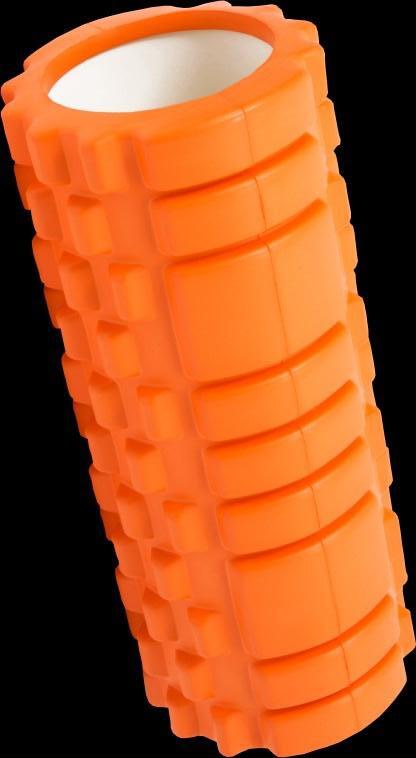


It is well understood that sleep plays a vital role in the recovery of athletes (see ). Although research has been HERE mixed regarding the influence that evening high-intensity activity has on sleep quality (no effect vs negatively impacts sleep efficiency), there is no doubt that athletes often endure a reduction in total sleep time because of a delayed bedtime following competition (see HERE).
However, until recently, the only accurate examination of sleep quality – by objectively measuring the various stages of sleep using a polysomnography (PSG) device – has not been possible or practical for athletes outside of a laboratory setting. Sleep stages are important to understand, as stage 3 (N3) is the point at which an individual achieves their deepest and most restorative sleep (e.g. the body repairs tissues and supports immune function, see New PSG devices that HERE). are portable have the in-depth ability to measure the electrical variation noted with sleep stages, giving us insight to the quality of a night’s sleep, while in a familiar (at-home) setting.
With the validation and portability of these PSG devices (see HERE, HERE, HERE), and research can begin to examine sleep at opportune times (e.g. post-match), and practitioners can more accurately understand an athlete s sleep. Therefore, the purpose of this research was to examine the impact that a competition later in the evening had on objective sleep metrics, as well as subjective reports of team-sport athletes.
Sixteen male team-sport (basketball, field hockey, and volleyball) athletes (age 25.4±1.4-yr) who trained (� 8-hr per week for 6-yr) at the regional or Italian national level were recruited for this study They completed the Horne-Ostberg Morningness-Eveningness Questionnaire to be classified as morning-, evening-, or neither-type individual, and took the Pittsburgh Sleep Quality Index to assess potential sleep concerns.

Each athlete had sleep data taken for four successive nights around an evening (starting between 6-9 PM, finishing between 8-11 PM) competition, the two nights before (PRE2 and PRE1), and two nights immediately following (EM and POST1) the match. Sleep data included subjective recovery scores using the Total Quality Recovery scale, a sleep diary to note bedtime, wake time, night-time awakenings, and subjective quality, as well as sleep staging using a validated portable PSG device.
All data was analysed to determine sleep quality and quantity for comparison before and after late evening competition. Researchers specifically looked at bedtime, wake-up time, total sleep, sleep efficiency, % of rapid eye movement sleep, % sleep in the N1-3 stages, sleep onset latency, wake after sleep onset, as well as cortical arousals for potential effect that late evening competition would have on these variables.


The most specific and notable takeaway from this research was allowing athletes time for additional sleep in the morning following a match. Bedtimes were roughly 90-min later on the evening of a competition, and allowing athletes to have a morning free of any meeting or training obligation allowed them the additional time needed to extend their waketime and achieve a consistent amount of total sleep. This routine was further supported in that sleep quality was unaffected and subjective recovery reports remained high following a competition.
Notably, when examining sleep stages, use of a PSG device is the most valid option, whereas leaning on the results provided from a wrist actigraphy are not as reliable in identifying stages of sleep. However, from a sleep window standpoint (onset to wake-up), actigraphy can provide an objective measure of sleep for athletes or coaches that is more reliable than an athlete s subjective recall (see ). Likewise, use of HERE actigraphy may reduce the burden or hyper-focus around sleep activity in athletes.
Regardless, any sort of technology that is designed to monitor an individual s sleep has the potential to negatively influence someone’s sleep environment and quality As a starting point, use the Pittsburgh Sleep Quality Index as an initial screening tool to identify individuals who may need specific monitoring and further measurement. This will make any attempt at sleep intervention more individualised and helpful to those in need.
Further, if any device (e.g. PSG or actigraphy) is incorporated for an athlete, it is best practice to allow 2-3 nights to get used to wearing the device before making any decisions or conclusions about the data received. With this concept in mind, sleep has numerous influences, so making generalisations based on the week can be most helpful and realistic for athletes as opposed to only looking at one specific night.
If an athlete has a late-evening bedtime and knows their sleep will extend into daytime (sunlight) hours, using black-out curtains or wearing a sleep mask can help with the sleep extension needed to achieve a full night’s rest (see HERE).
Reducing exposure to blue (short-wave) light from electronic screens (e.g. phone or computer) by wearing amber-lens glasses can improve sleep onset, sleep quality, and alertness in the morning following (see ). If athletes are HERE using these devices post-match while receiving any medical treatment or returning home on a team bus, wearing these blue-light blocking glasses can improve subsequent sleep.
Paced breathing for 20-min prior to sleep has been shown to help individuals who suffer from insomnia or have trouble falling asleep (see HERE). Encourage athletes to extend their breathing rate, allowing 3-7-sec for both inhalation and exhalation.
When sleep is reduced or restricted for any reason, the addition of an afternoon nap can be helpful. Naps have been found to improve recovery (reducing fatigue and soreness) and increasing mental and physical performance. In this research, it was found the ideal length is 2090-min between 1-4pm in the afternoon, allowing a 30-min gap to wake up before any sort of mental focus or physical effort is required (i.e. meeting or practice).
As expected, in the night’s sleep immediately following a competition, bedtime was delayed, and wake-up time was later than other nights with no competition. However, subjective recovery scores, report of quality, and overall sleep metrics (e.g. total sleep, sleep efficiency, stages of sleep onset, wake after sleep onset, and cortical arousals) were consistent across the four nights.
“The results of this study are unique compared to a number of others that have found a negative influence on sleep due to late night exercise, activity, or competition. However, this study was not unique in that negative influence either, given that bedtime was delayed significantly due to competition and the arousal, activity, and interference that has on an individual’s night-time routine. The uniqueness came in the form of the sleep extension in the morning following which was provided for these team-sport athletes, and this proved a viable strategy to maintain sleep quality and improve the recoverability of athletes who are likely to return to training and prepare for a subsequent competition in the week following.
“This is a profound and gracious step encouraged by the coaches to prioritise sleep and taking advantage of its restorative benefits. Sleep and the opportunity to recover takes time and is an irreplaceable activity that cannot be undone by the addition of any modality, supplement, or intervention. Coaches need to keep this concept in mind - that recovery is not an action, but something that happens over time. If that time is allowed, and the necessary education and encouragement around sleep habits and hygiene are encouraged, athletes will have improved recovery and performance in return.”



Collegiate beach volleyball athletes must perform repeated jumping, diving and sprinting on a sand surface, which is harder to move on compared to a firm surface. In a match, there are high-intensity rallies with short recovery times in between.
The typical schedule for these athletes include multiple matches a day, which is a tournament setting that can last two full days with little break in between. Thus, recovery is essential in order to sustain performance.
The authors in this study compared recovery time between simulated games of beach volleyball and the effect it had on performance of the athletes, who were collegiate D1 players.
Ten collegiate beach volleyball players participated in the study They were well hydrated and asked to abstain from alcohol or caffeine in the 24 hours before the study Anthropometric measurements were performed along with a test of each athlete’s standing vertical jump.
The athletes were paired with an opponent based on ability. In the first week, the athletes completed two sessions with either a 24 or 48 hour recovery time in between. In the second week, the athletes completed the opposite recovery time. They refrained from recovery treatment throughout the study
The sessions consisted of the following activities, followed by a simulated full match between two participants: subjective recovery scale, a countermovement jump test, an agility test and a series of volleyball drills. All of these activities were performed on sand. Heart rate and jump performance were measured throughout via wearable devices.
Following the activities, the RPE (Rating of Perceived Exertion) were measured for each athlete. Pre and post measurements of each physical performance test were performed for each athlete.


Of the volleyball players tested, performance was maintained or even improved when testing tactical skill and jump performance regardless of the recovery period. This may have been due to the skills and drills tested not being challenging enough for the athletes. Regardless of this, positive takeaways are present.
Beach volleyball performance is stable in this population regardless of the recovery time between performance sessions. Because of this, coaches can be more confident when their practice and match schedule is congested. With this type of schedule, there does not seem to be a correlation with reduction of performance or increase in injury Along with this, tactical skills stayed consistent throughout the study regardless of recovery time.
Although these results occurred, the study’s main limitation was the amount of sessions performed. There were only two sessions performed per week in the study, when a normal NCAA schedule may consist of five to six sessions a week. Future studies should compare the tested measurements over a longer period of time to see what factor fatigue has on performance.
The authors found there were not statistically significant changes in performance when comparing 24 vs. 48 hours of recovery between sessions of fitness testing with simulated volleyball drills and matches. They found the athletes performed similarly in jump testing when comparing the two recovery times.
Along with this, the athletes showed similar scores with drills performed prior to simulated matches. This may have been due to these simulated tasks not being difficult enough for the athletes tested.
Through this, the authors concluded that different recovery periods do not have a significant effect on performance during beach volleyball in collegiate athletes. This may be due to a multitude of factors which include high skill levels of the athletes being tested.
“Although beach volleyball athletes perform high-intensity activities in difficult conditions, with little recovery time in between matches, recovery time does not significantly affect performance. This in part may be due to the athletes at this level being able to utilise their tactical skills more efficiently when they experience physical fatigue.
“This study was limited however based on the amount of sessions performed throughout the week. As mentioned previously, NCAA schedules are more congested throughout a week in the season. With this, fatigue may have been more limiting than it was presently
“Coaches can feel comfortable with a congested schedule they encounter but must also pay attention to drops in performance throughout the season. Fatigue can accumulate both physically and mentally which can cause an increased risk of injury.”
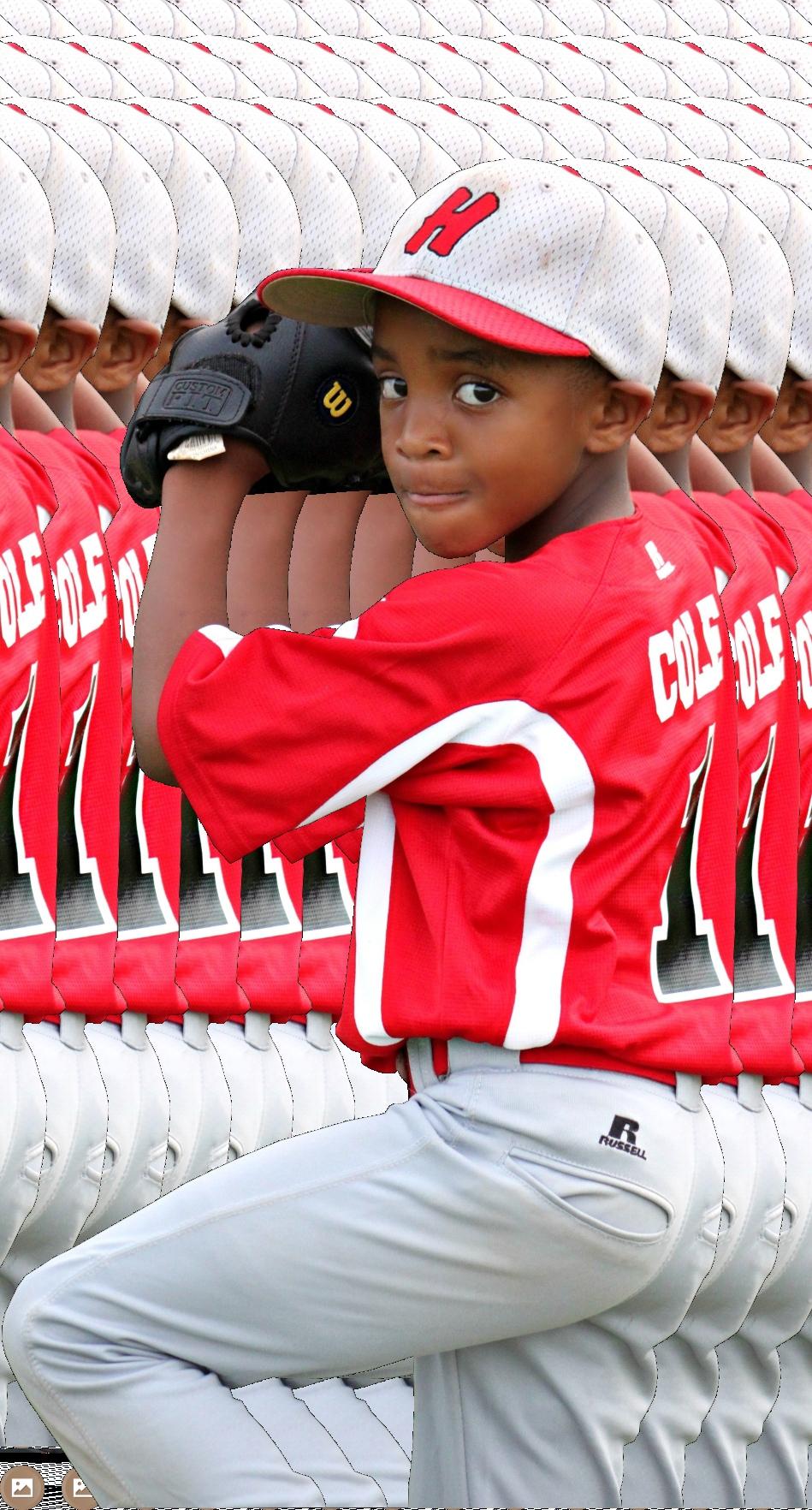




Netball is a dynamic sport, requiring athletes to move under high velocity and force demands. Activities such as jumping, change of direction and deceleration, as examples, are very taxing on the musculotendon structures that govern movement.
In order to prevent injury and to support optimal performance, a neuromuscular warm-up has previously been an effective aid in supporting players as they transition into match play. In New Zealand (NZ), the Netball NZ organisation released the NetballSmart Dynamic warm-up (NSDW). However, this was subject to poor uptake due to a lengthy completion time and reported participant tedium. To reduce these barriers, Netball NZ therefore created an adapted and shortened 8-10 minute Power Warm-up (PWU).
The aim of this study is to compare the effectiveness of both warm-ups on youth netball players.
In total, 77 students from six schools participated in this study. In order to ensure the warm-ups were delivered correctly, a trained physiotherapist delivered a practical workshop during the pre-season to coaches and athletes. In addition, online resources were provided for future reference.
Once coaches were confident to deliver this, students were allocated to either the NetballSmart Dynamic Warm-up (NSDW [n=37]) or Power warm-up (PWU [n=40]). Both warm-ups were delivered three times a week for 12 weeks.
The researchers took pre and post measures for 505 change of direction (COD), isometric mid-thigh pull (IMTP), Y-balance test, and vertical and horizontal jump tests.

In netball, jumping is frequently performed to receive, defend, intercept and return the ball. On average, jump-landing patterns are thought to occur between 60-120 times in a game. In addition, 67% of these jumps are performed unilaterally (HERE).
Given the voluminous amounts of jumps performed in any given game, it is imperative coaches place some form of plyometric exercises in their warmups. The ‘typical exercises such as single-leg countermovement jumps, pogo jumps and skipping are fantastic introductory exercises for youth. The reverse jump in the attached video is another fantastic option to add into programming as it develops coordination and eccentric qualities that will support deceleration in many sports.
When investigating the most common injuries in netball, sprains were the most common experienced at the finger, wrist, and ankle joints (HERE). The most serious injuries were to the wrist and grade three ankle sprains. Again, ankle injury prevention can be supported in all of the single-leg plyometric tasks above, coupled with some singleleg strength exercises (e.g. single-leg Romanian deadlifts and single-leg pistol squats) to support movement control. When looking at the wrist, I’ve had lots of success incorporating single-hand hangs, bear crawls (forwards and backwards), and handstand introductory exercises such as feet on box pike holds or handstand wall holds (HERE), (HERE).
As neither warm-up proved to be more advantageous than the other, this marks a good opportunity for coaches and teachers to reflect on ‘what they do’ at the start of the session. One of my favourite pieces to read on this can be seen in the attached article: ‘Warm-ups for youth athletes: making the first 15 minutes count’. In my opinion, this is essential reading for any youth coach working with children. The authors lay out several examples of good warm-up structures, following the RAMP protocol. When planning your warm-up, my top tips are to reverse engineer the process (i.e. start with the end in mind), encourage opportunities to make movements playful, and top-up any fundamental movement skills that are missing (e.g. singleleg RDL into a throw and catch off a wall).
The results of this study indicate there were no significant differences between the NSDW or PWU for any of the outcomes measured (COD, IMTP, Ybalance test and jumps).
Significant improvements (p> 0.05) were found in the Y-Balance right and left legs after 12 weeks of the NSDW and PWU
Similar results were experienced in the IMTP test and COD test for both warm-up interventions, with improvements of 162N for the NSDW group and 151N for the PWU group. 505 COD times only improved in the NSDW group (-0.07s).
Vertical and horizontal jumps didn’t improve in either warm-up group.
In summary, both-warm-ups provided similar outcomes on the evaluated measures.
“From this study, coaches should consider that either warm-up can be introduced with proven benefits on performance and development. More specifically, any netball coach looking to develop balance, change of direction, force production, and positive jumping traits will benefit from incorporating these exercises. Personally, I would use the Power Warm-up as it is both faster and produces similar results. Moreover, some of the issues associated with the NetballSmart Dynamic warm-up is that children found it too long and tedious. As coaches, we have a duty to interact and shape practice around the opinions and input of our athletes to secure buy-in and enjoyment.

“In summary, it is really important the warm-up is not seen as ‘just’ an introductory task, but an avenue to develop qualities over the long-term. This is particularly important in youth, given the long-term opportunities usually given to coaches to make meaningful change. To support this opinion, our friends at Core Advantage offer some insightful inputs in the attached podcast, covering topics from session structure and injury prevention in a tailor-made video specific to netball. This is highly relevant to this study, by providing a ‘needs analysis’ for any coach working in netball. This, coupled with the practical takeaways, should allow coaches to reflect on how/if they need to alter their programmes to support performance, skill acquisition, and injury prevention.”

This month ’ s top research on nutrition


W H AT A RE T H E E F F E C TS O F C A F F E IN E O N F O RC E D E V E LO P M E N T ?
T H E PA RA D OX O F RA P ID W E IG H T LO S S A N D RA P ID W E IG H T G A IN TO IM P RO V E P E RF O RM A N C E IN C O M BAT S P O RT
S O D IU M BIC A RBO N AT E - C A N IT
L E A D TO A RIS E IN P E RF O RM A N C E A S W E L L A S C A KE S ?




Rate of force development is a metric used to measure explosive strength in sports. A higher rate of force development is associated with higher jump height and improved sprint performance. It has also been shown to be a relevant metric for aging populations, with higher rates of force development being associated with increased mobility
The ergogenic effects of caffeine are relatively well established - it has been shown to improve muscular strength, reaction times and endurance performance as highlighted in the associated article. However, the impact that caffeine has on rate of force development is slightly less clear The purpose of the present meta-analysis was to explore the effects caffeine has on rate of force development.
The authors of this meta-analysis carried out a search across 10 databases using terms including ‘caffeine/coffee and ‘rate of force development/rate of torque’. For studies to be included in the analysis they must have met the criteria of: studying the effects of caffeine ingestion on rate of force development, being placebo controlled and crossover designed study,
and studies with human populations
A total of 11 studies were included in the review. Risk of bias and quality of evidence of the studies were evaluated, along with the findings detailing the effects of caffeine on rate of force development.

Caffeine is effective in improving the rate of force development in resistance training exercises. This is something a lot of athletes could benefit from, especially those who compete in strength and power-based sports including weightlifting. Despite no significant effect on countermovement jump performance (albeit a limited sample size of 3 studies), it’s likely caffeine will still improve other areas of performance, for example sprinting. As such, practitioners will likely see benefits of caffeine ingestion with team sport athletes.

The other previously found ergogenic effects of caffeine are still relevant to many athletes too. Thus, even if you are not looking to improve the rate of force development, it can be a very useful supplement to be consumed pretraining or competition to improve alertness.
The results of this study indicate the higher the dose, the more effective caffeine is as an ergogenic aid. However, when using caffeine with athletes, you should also be wary of the negative side effects such as anxiety or gastrointestinal upset that some people experience with larger dosages. I have personally seen great effects in practice of lower dosages of 1-2 mg.kg1 - the equivalent to a standard caffeine gum or caffeinated drink (i.e., Red bull).

Doses of 3-5 mg.kg-1 taken 45-60 minutes prior to exercise is currently recommended but they should always be trialed with athletes beforehand, especially with those who may not habitually consume caffeine on a day-today basis.
The authors of this study briefly mentioned the impact improved rate of force development could have on aging populations. Despite the positive findings of this study, other methods of improving rate of force development, such as resistance training, should be used within older populations as opposed to just caffeine and would likely benefit aging individuals far better than caffeine.
Across the 11 studies, the populations studied included young adults, resistance trained adults, and athletes. The range of doses of caffeine across the studies was found to be between 3-10 mg.kg-1. The most common timing of doses of caffeine was 45-60 minutes prior to exercise and rate of force development was measured either in the context of resistance exercises or using countermovement jumps.
The authors of this study determined that caffeine had a significant effect on rate of force development during resistance exercises but not during a countermovement jump test. They also found a significant difference between certain doses of caffeine and rate of force development. Higher doses of 6-10 mg.kg-1 were found to produce an enhanced rate of force development, more so than smaller to moderate doses of 3-5 mg.kg-1.
“The results of this study are not necessarily groundbreaking, however it is always nice when research confirms current practice.
“Alongside other well researched supplements (whey protein, creatine, vitamin D) I think caffeine is a great supplement for athletes to be using in training and competition. A reminder - it can come in many forms (coffee, gum, gels, powder and tablets) and also should be practiced in training sessions before competitions.
“Finally, my advice would be to reduce caffeine intake in the afternoon and evenings so it does not disrupt sleep patterns.”





Judo is a combat sport in which athletes fight within weight divisions. Unlike other combat sports such as boxing, where every athlete is required to weigh in before the fight, Judo applies a random weight check that is applied just before the first fights to a limited number of athletes in the morning of competition - if athletes weigh more than 5% of the target weight, they are disqualified. This percentage of weight loss is often achieved by manipulating body water content, since water makes up a large percentage of body mass and can be manipulated at rapid speed compared to other components of body mass (i.e, fat or muscle mass). To achieve this, athletes adopt acute weight loss strategies such as fluid restriction or active sweating.
However, rapid drops in body water weight can lead to dehydration. Extreme dehydration can have adverse effects on performance and health. Studies have reported judo athletes reduce almost 5-7% of body mass before competitions, signifying extreme levels of dehydration. Therefore, competitors adopting these strategies are at risk of impaired health status and performance. However, rapid weight gain following rapid weight loss may allow athletes to rehydrate, providing them with a size and strength advantage against lighter and weaker opponents.
Most research on weight loss in judo has studied male athletes, with no studies investigating sex differences in hydration of judo athletes.
This study examined the differences in dehydration and rapid weight gain between male and female judo athletes before competition.
Thirty-five male and 15 female elite judo athletes participated in this descriptive, repeated measures study. Body mass, urine specific gravity, and the athletes' body composition were measured at the official weigh-in (15 hours before competition) and on the morning of competition day (two hours before competition). Body mass measurements were analysed to determine rapid weight gain and percentage of weight gain. Urine specific gravity was used to assess the hydration status of the athletes, classified as well hydrated (<1.010), minimal dehydration (1.010-1.020), significant dehydration (1.021-1.030), or serious dehydration (>1.030).
Body composition was measured using bioelectrical impedance analysis to determine the athletes’ total body water
Body mass increased significantly in both male and female athletes. Rapid weight gain of the male athletes (2.07 kg, + 3%) was significantly greater than rapid weight gain of the female athletes (1.13 kg, + 1.8%).
Urine specific gravity values significantly decreased from official weigh-in (males: 1.027; females: 1.027) to twohours before competition (males: 1.025; females: 1.024). No significant differences between sexes were observed. A key result to highlight is that the majority of male and female athletes were still significantly dehydrated two hours prior to competition.
No changes in total body water were observed.
Judo athletes are at risk of dehydration following rapid weight loss and subsequent rapid weight gain before competition. Thus, rapid weight gain following weigh-in may not be sufficient to give these athletes a size and strength advantage against lighter and weaker opponents.
Practitioners should educate athletes on the impacts of weight loss, gain and dehydration on athletic performance.
Previous research and the results from this study indicate that ad libitum fluid intake is not sufficient to rehydrate following rapid weight loss. Therefore, practitioners and athletes should work together to develop a personalised fluid intake strategy to ensure the athlete is well hydrated before competition. This should be implemented in training or sessions before competition. Where practitioners cannot measure urine specific gravity, athletes should monitor the colour and volume of their urine, aiming for consistent pale-yellow colour This may be achieved by consuming 5-10ml of fluid per kg of body weight in the 2-4 hours before exercise. However, athletes should be wary of over drinking fluids since this could lead to water intoxication (hyponatraemia).

Therefore, reducing the amount of rapid weight loss and weight gain before competition will allow athletes to make weight safely, minimising these risks. In my experience working with elite combat sports athletes, consuming strategic amounts of energy from low weight/low fibre foods while inducing a mild fluid deficit is the most effective strategy to achieve acute weight loss whilst preventing drops in performance after the weigh in.

Future research may control for factors that could have influenced the rapid weight loss of athletes, such as exercise intensity, food, and fluid intake. Research should also be carried out on female athletes underrepresented in the current literature.

“In my experience, elite combat sports athletes are some of the most driven and dedicated athletes who will often do anything to maximise their chances of success on fight day This dedicated mentality (and lack of education) is often the driving force behind these athletes adopting rapid weight loss strategies.
“Whilst making weight is a requirement for competition, this should not come at the expense of the athlete s health or performance. The practitioner’s responsibility is to inform and put into place more sustainable chronic and acute weight loss strategies to avoid these risks. Educating athletes on the importance of longerterm weight loss to preserve muscle mass and subsequent performance may be a good driver for athletes to change their usual rapid weight loss practices.
“This requires planning from the practitioner before an athlete takes a fight to determine whether the fighter has enough time to make weight safely over this period.”





Sodium bicarbonate is a relatively well researched ergogenic aid acting as a buffer (see article below), and has previously been shown to improve performance across a wide range of disciplines including combat sports, resistance training and high intensity single modality movements such as cycling, running or swimming.

This position stand looked to 1) critically evaluate and summarise the existing evidence base on the performanceenhancing effects of sodium bicarbonate; 2) provide recommendations on use of sodium bicarbonate, and 3) suggest topics for future research.
The actual methods of the review and analysis of the existing literature on sodium bicarbonate was not stated within the article. Instead, a description of how the International Society of Sport Nutrition produces position stands was stated - this involves identifying a lead author to perform a comprehensive literature review that then undergoes a critical review and multiple revisions.

This is the process that was carried out to form this position on sodium bicarbonate and exercise performance.
Due to the overwhelming evidence of an increase in performance, it is worth trialing sodium bicarbonate with athletes who compete in high intensity sports with relatively short time domains. Due to the lack of evidence on improvements in performance over longer time domains, it’s likely not worth trialing with these athletes.

Always ensure you practice supplementation protocols with any athletes before a competition and in training sessions - this is potentially more important with sodium bicarbonate due to the adverse side effects it can cause. It may also be worth trialing doses of 0.2g.kg-1 first and then building to 0.3g.kg-1. The multi day protocols mentioned in this review are also worth considering to minimise these effects, but as with acute single doses, practice these outside of a competition setting before using in competition.
At this point in time, chronic supplementation with sodium bicarbonate is not warranted as the evidence base is small. Therefore, only use it acutely for certain performance-based sessions or competitions provided the athlete has not previously experienced any adverse side effects.
As when using any supplement, always ensure they are batch tested and where possible registered with a third party testing laboratory such as Informed Sport in the United Kingdom or NSF in America.
With regards to performance, the existing evidence in the literature suggests sodium bicarbonate can improve performance of high intensity exercise from 30 seconds to 12 minutes duration for several different disciplines. These benefits are seen in both male and female athletes upon supplementation of 0.2-0.5g.kg-1 of sodium bicarbonate.
A single dose of 0.2g.kg-1 has been put forward as a suggested minimum effective dose, with 0.3g.kg-1 being considered an optimal dose due to an increased risk of adverse side effects at doses of 0.4-0.5g.kg-1 whilst providing no additional benefit. The current recommendations for timing of sodium bicarbonate are between 60 and 180 minutes prior to exercise or competition.
Multi-day supplementation protocols currently exist for sodium bicarbonate, designed to reduce the potential adverse side effects. The current protocols are three to seven days long and consist of 0.4-0.5g.kg-1 being taken each day but split into smaller doses and spaced out across the day. For example, a 100kg athlete may split the 40g dose over 4 x 10g servings. The most common side effects of sodium bicarbonate supplementation are those associated with the gastrointestinal system, such as bloating, nausea, vomiting and stomach cramps. These side effects can be reduced by consuming sodium bicarbonate with a high carbohydrate meal, or within coated capsules.
The method of action of sodium bicarbonate is still relatively unknown, however it is thought to be an extracellular buffer which likely contributes to the increase in performance seen, such as 3% increases in mean power in cyclists across a 90s sprint Additional increases in performance may be seen when combining it with creatine and beta alanine but it’s unclear if there is any additional benefit when combined with caffeine or nitrates.
There is a small amount of evidence of increased time to fatigue and power output in long-term use of sodium bicarbonate, with one study from Edge et al (2006) showing greater improvements in time to fatigue following a training block (164% improvements vs 123% in a non supplemental group). But the acute short-term benefits, as shown in the related table taken from the present position stand, are reported more often.
“I believe sodium bicarbonate is not necessarily used as often as it could be. This is likely due to the taste (not great) and fear of adverse side effects. Because of this, athletes may be missing out on what could be a very useful supplement.
“Therefore, I believe it’s important to start with smaller doses of it, as one adverse experience with a higher dose is likely to put an athlete off for life and thus potentially lose out on some improvements in performance. The translation of laboratory trials to the applied athlete is still small but promising research is beginning to be published.”

